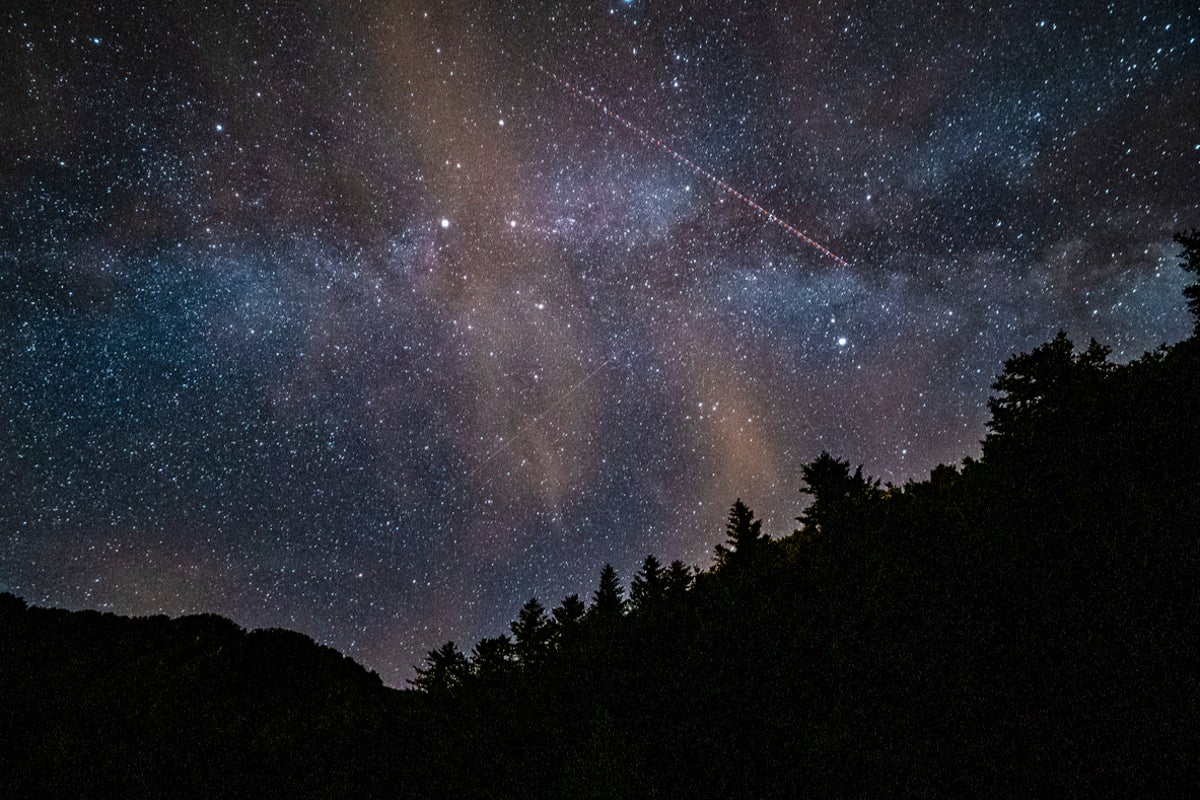
The Orionid meteor shower which has been illuminating the skies this month is set to peak on Saturday.
The display, which began on 2 October and will continue until 7 November, is caused by debris from the famous Halley’s comet.
While the comet only passes by Earth roughly every 75 years and is next expected in 2061, the meteor shower lights up the night sky every year.
As the comet follows its path around the sun, it leaves a path of tiny debris which enters Earth’s atmosphere at speeds of around 41 miles per second and burn up due to friction with air.
As the shower reaches its peak on Saturday, it will produce up to 25 meteors every hour, and will remain visible until the early hours of Sunday.
Meteors will emanate from just above the Orion constellation – best known for its three-star belt. The best way to view them is to look up to an area of the sky near the upraised club of Orion, which is best observed just before dawn.
Visible to the naked eye in all parts of the sky in both the northern and southern hemisphere, all that is needed to spot the display is a clear sky and a safe spot away from street lights and other light pollution.
Nasa advises allowing up to 45 minutes to allow your eyes to adjust to the darkness when looking up at the night sky, ideally without looking at phone screens or other light sources.
— (PA Graphics)
Once adjusted, it should be possible to see light trails from the meteors with the naked eye, lasting anywhere from a few seconds to minutes.
While Storm Babet means views of the Orionid shower may be somewhat obscured in the UK this weekend, it will remain in its maximum phase until next Saturday, and will still be visible until 7 November.
Dr Minjae Kim, of the University of Warwick, said: “The Orionid meteor shower is a globally visible celestial event that takes place from 2 October to 7 November, with its peak occurring on the night of 20 to 22 October, typically between midnight and dawn.
“However, you can easily catch a glimpse of this meteor shower for several days before and after its peak date on your annual calendar.
“This meteor shower holds a special place in the annual calendar of celestial events, not only for its breath-taking beauty but also because it originates from the debris of one of the most renowned comets in history, Halley’s Comet (1P/Halley).
“So, if you missed already the ‘once-in-a-lifetime event’ of Halley’s Comet, don’t worry, this annual Orionid meteor shower offers a unique opportunity providing some compensation.”
Additional reporting by PA







